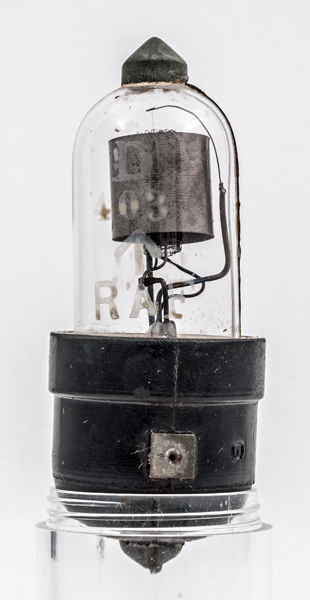
|
The RAF Type D is a soft valve designed to be used as a detector and was first used in January 1919. The Type D was made by both GEC and Ediswan, this example is from GEC. Both the Type C and Type D have vertical electrodes and fit into the Interservice Type One base. The filament in both is a single strand of tungsten wire. The top connects via the support and tension spring through the pinch to the base cap. In the I/S1 base an external metal strip takes one end of the filament to the top cap. The grid and anode are flat square connectors on the base and are marked with a G or A as appropriate.RAF Type C is a hard vacuum triode with a helical grid and a small diameter cylindrical anode and the design follows the R Type pattern. The soft D, however, has a larger diameter anode and a mesh grid that resembles the Round Valves.The Type C and Type D were used in the Aircraft Tuner Receiver Type T10 and in the Ground Station Detecting Amplifier T-XII. The T10 used two C valves as high frequency amplifiers, a D Type as detector, and two C valves as low frequency amplifiers. The T-XII used four C valves as high frequency amplifiers and one D valve as the detector.The envelope has the Type designation of D, serial number of 403, plus the up arrow and letters RAF. The side connector on the base is marked G.We also have a Philips D-1 bright soft detector triode and the Moorhead D..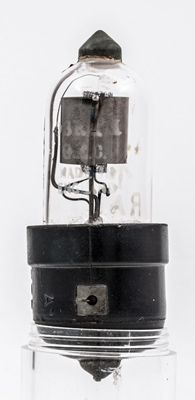
This side is the anode connection with the A pressed into the plastic. The lettering is OSRAM, GEC and Made in England.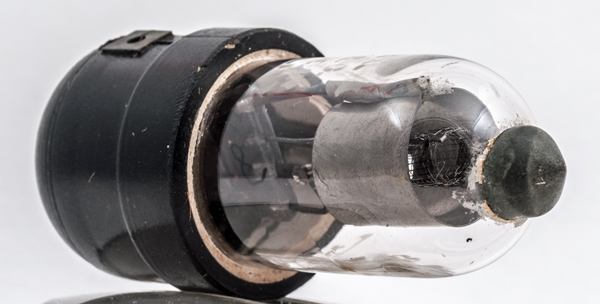
The filament connects to the pips on the top and on the base. The connection to the top pip is via an external metal strip. The anode is a cylinder and the grid an open mesh.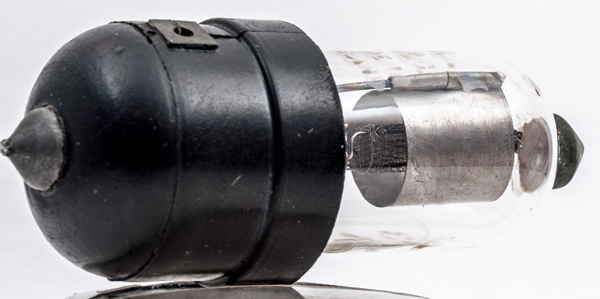
The connection of the anode to the support on the top. The grid has two supports. The single strand tungsten filament is clamped in a fold on the lower support and is just visible.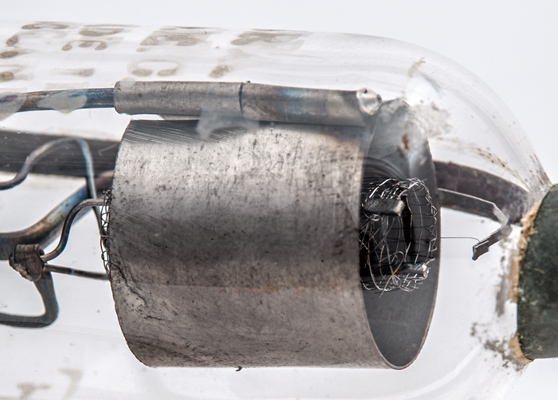
Here the grid supports can be seen to hold the grid mesh in folds of the support rods. The filament is clearly seen within the fold of the top support.The wide glass tube envelope is 25 mm in diameter, and including the I/S1 base pins is 82 mm tall.References: 1003 & 1047. Type D was first introduced in 1919. See also 1919 adverts. |
Absolute Maximum Operating Conditions¶
| Vh | Ah | Va | 
| 3.0 | 0.75 | 30 |
|
Updated May 04, 2022.
|
|